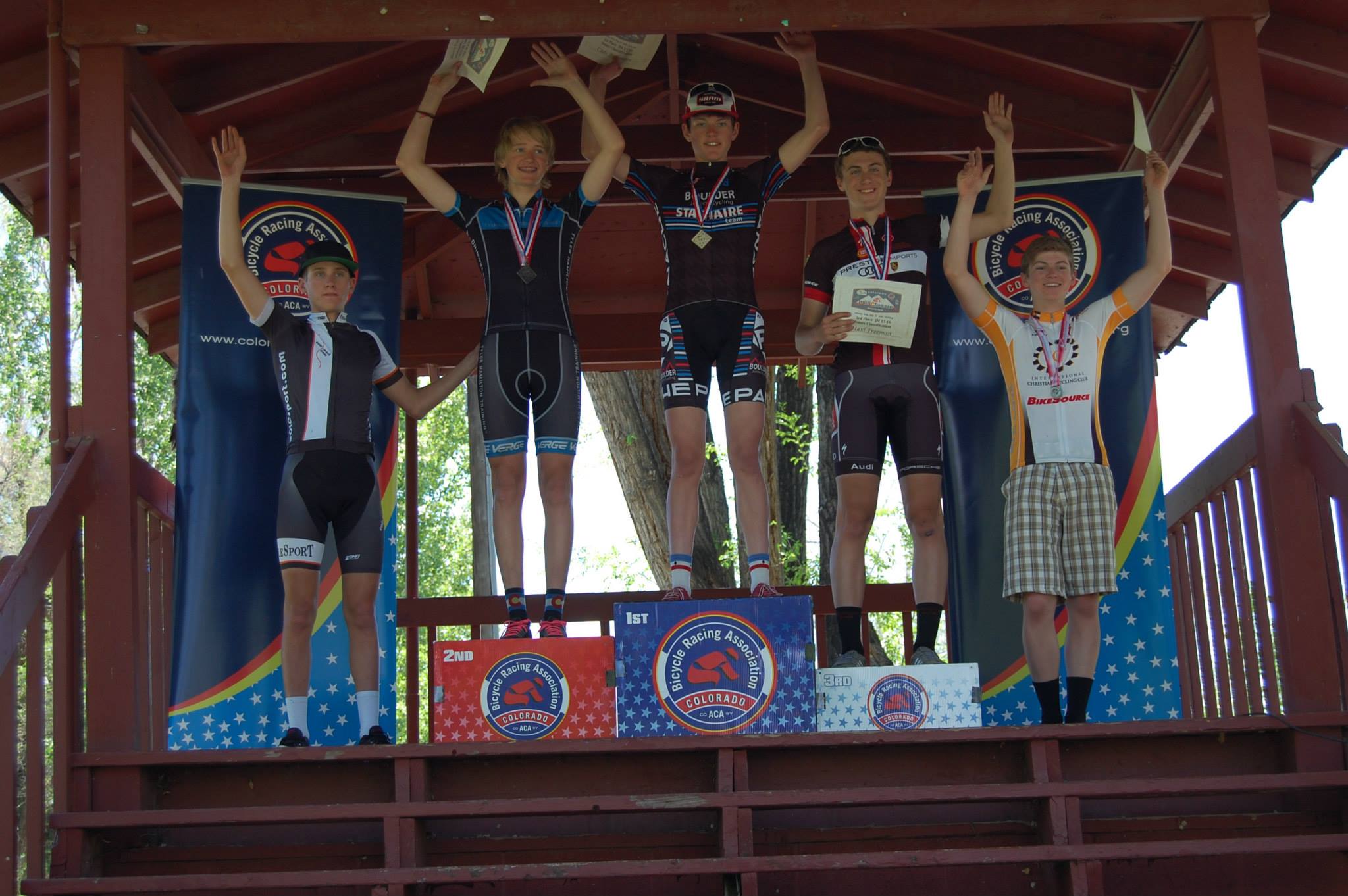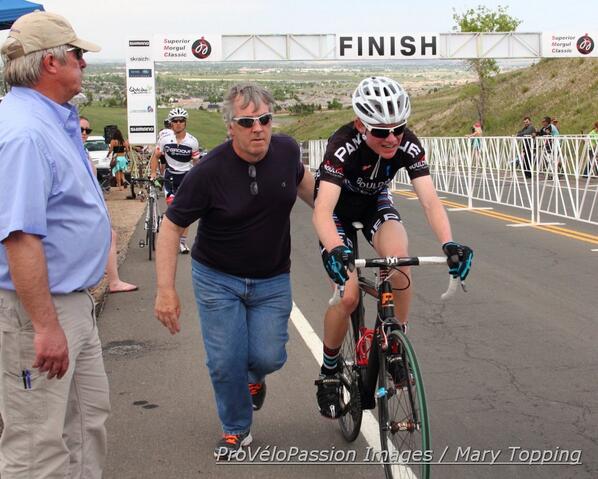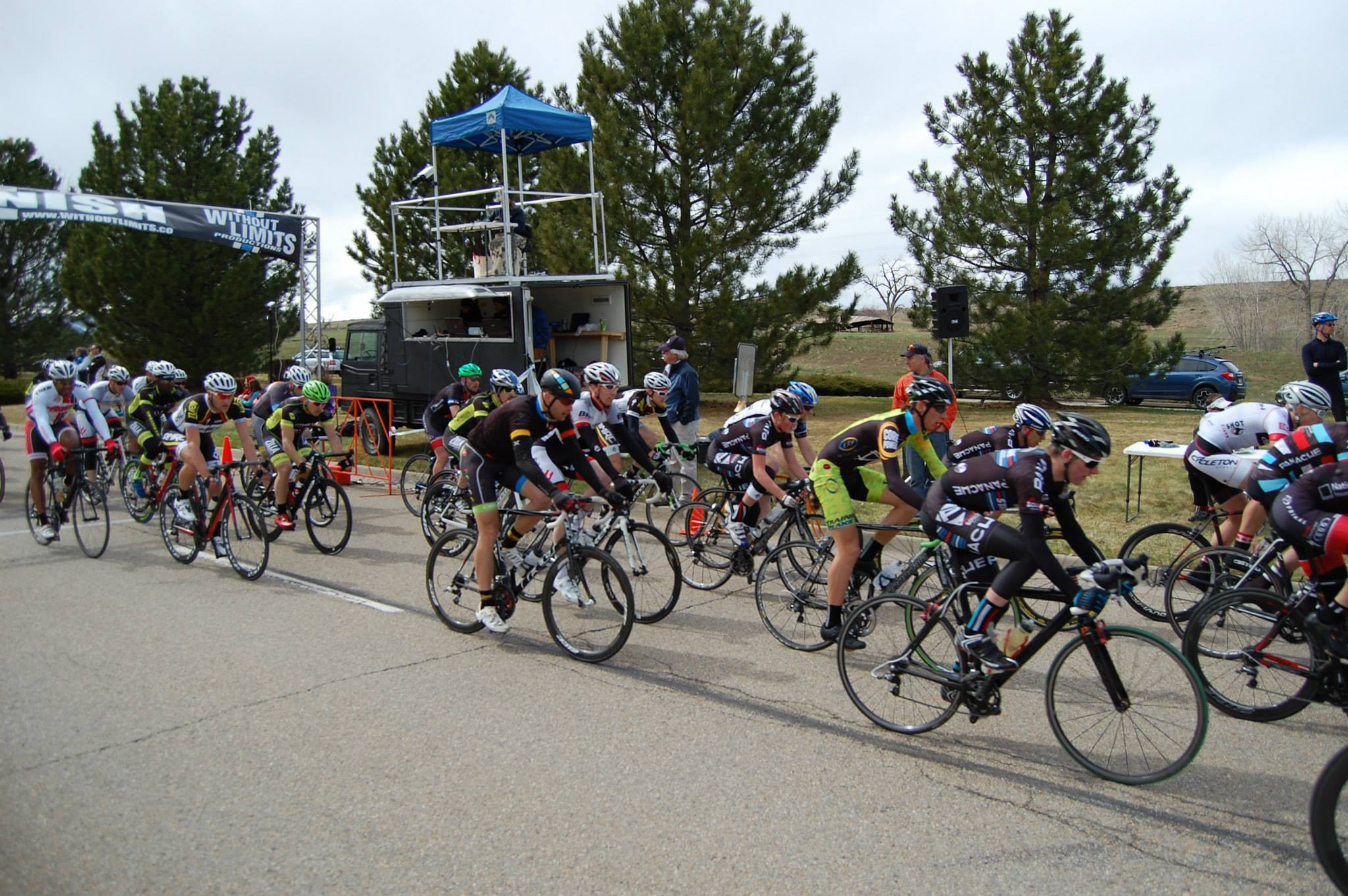| ||||||||
|
(December 4, 2013) This is an essay I wrote for school explaining what I do. For those of you that don't know, I race Cyclocross, a form of cycling explained in this essay. I will probably create a shorter, less school-like version in the next week or two. Cyclocross, a form of cycling, is a sport which many people have never heard of, and yet there are hundreds of people competing each weekend, just in Colorado! Across the US, there are tens of thousands of racers who compete each year, and many more people who spectate. However, many people do not know about the sport of cyclocross, which is one of the biggest factors which is hindering it’s expansion. From a rich history, blossomed a sport, full of heckling, mud, and frites, long dominated by the Belgians. A lot of changes have occurred, and a lot more people have been changed by this sport, or rather, by this lifestyle. It all started in the early 1900s tracing back to Daniel Gousseau, a French army private, who would ride his bicycle through the woods alongside his friends riding horseback (Boulanger and Kesteven). This is one of the many possible origins, and most of these possibilities are probably real, but as goes history, and all the people wanting the credit, it is hard to find who actually started cyclocross. Another source says, “As you would expect, the how and where of the origins of Cyclocross is a bit of a discussion. While the Belgians and Dutch certainly seem to have a lock on the sport it wasn't until the Frenchman Octave Lapize won the 1910 Tour de France and attributed his success to his off-season cyclocross training that it really started to take official racing form. Veldrijden, or 'field-riding', began as a means for road racers to continue training through the winter without facing horrendous road conditions. Instead, they took to the fields and forests, honing their handling skills and using the sections where they were forced to portage their bike to help bring the blood back into their toes” ("Cyclocross; A Brief and Incomplete World History"). A third source states: “Like much of bike racing, Cyclocross is rich in history. It's traceable roots date back to France in 1902, when a French soldier named Daniel Gousseau is credited with organizing the first French National Championship Cyclocross race. Numerous other National Championship Cyclocross races started popping up in other European countries shortly there after in places like Belgium, Luxembourg, Spain,
and Italy.
Prior to 1902, it is believed that Cyclocross originated during the Autumn in the French countryside when French road racers would race through farmer's fields, taking short cuts, and jumping over fences from one town to another. Early on, this was called "steeple chasing" as the riders would simply ride toward the next town with the landmark they were following being a church steeple.” (L.)
France played a large role in kicking off cyclocross, probably more than any other nation, setting up the first national championship, and many other events. It can be agreed upon that many road racers were using cyclocross for training during the winter months, and also that courses developed to have obstacles to make them more challenging (Katayama). However, it is not clear as to exactly when cyclocross started, but it is traced to the early 1900s and was gaining more and more popularity, especially in the 1940s, leading to the first World Championship in 1950. Continuing, cyclocross developed more and more, becoming more organized and urbane, extending to more professional road racers for offseason training ("Cyclocross; A Brief and Incomplete World History"), and also to amateurs looking for a type of racing more suitable to themselves. Belgians have caught on to cyclocross more than any other group, evolving with the sport since the first world championships, becoming very good very quickly, and staying very good. One article says, “Since the first official UCI championship held in 1950 (won by the miniature Jean Robic, victor in the '47 TdF), the Belgians have claimed 25 world titles, with the often lesser known De Vlaeminck brother, Eric, taking seven rainbow jerseys. Eric won six consecutive from 1968-1973. Roger De Vlaeminck, aka. "Mr. Paris-Roubaix" won his own title in 1975, perhaps helping to explain his success over the cobbles” ("Cyclocross; A Brief and Incomplete World History"). On the opposite side of things, the sport has not been around for very long for women, only 13 years, with the first women’s UCI championship coming in 2000 ("Cyclocross; A Brief and Incomplete World History"). Cyclocross races became more common in more areas, extending throughout most of Europe and eventually to the East and West coasts of America in the 1970s, with the first US National Championship held in 1975 in Berkeley, California (L.). However, all of the World Championships had been in Europe, up until January of 2013, where the US hosted a World Championship event in Louisville, Kentucky (Frothingham). There has still not been a World Cup event held outside of Europe. Cyclocross has changed and developed for over 100 years, starting as a fun race with buddies across farm fields, finding the fastest way to the next town, to actual sanctioned, organized events. However, cyclocross is still constantly developing in many nations and is becoming the next big form of cycling. “Believe it or not, it is now common to find more competitors and 10 times the spectators at your average Cross race as compared to your average road race here in the Midwest” (L.). Cyclocross right now still is not very big in the US, in comparison to large US sports, such as football and baseball. Although it is not huge, it is gaining popularity faster than ever. One source says: “In the past few years, the number of riders at U.S. cyclo-cross events has tripled to 100,000, according to the cycling organization USA Cycling. Despite that growth, Hanscom says, U.S. fans haven't shown up yet.
"We don't have the spectator base," she says. "We don't have the football fan watching our sport here. But we have the participation base, and I think for the sport to grow long term, you need to have both."
In Europe, it's the opposite: Cyclo-cross racers are celebrities.” (Katayama)
The US is finally getting some traction on the path of increasing popularity in the sport. “The first cyclocross world championships to be held outside Europe will take place in Louisville early next year and some new industry suppliers and organizations are lining up to support the historic event” (Frothingham). The Americans are also starting to catch up with the Europeans as far as results, although they are not quite in the front mix yet. “Internationally, Powers (The 2013 Men's US National Champion) is ranked 11th. Belgian racers took the top seven spots in the 2012 World Championships; the sport has deep roots in Europe” (Katayama). Even in Europe, with cyclists being superstars, there is still ground to be made up on other sports. Europe has a big head start on the US, however, and for America to catch up, there needs to be some rapid growth. Along with the racers, fans, and even countries changing, the rules and courses are changing. Races are handled in a very particular manner: “Cyclocross is a very specific type of bike racing. For the most part, the course is off-road but there are sometimes portions of pavement included in the course. You can expect to encounter grass, dirt, mud, gravel, sand, and a whole slew of other assortments and combinations. The races are based on a set time (measured by numbers of laps), not distance. Depending on your category, a race can be as quick as 30 minutes (for beginners), or as long as 60 minutes (for pros).
In most cases, race officials wait to see how quickly riders complete the first lap before deciding how many total laps will be completed. Depending on course conditions and pack motivation, the total time may be a few minutes less or more than the race flyer lists. Courses are twisty circuits, and if it is USAC-sanctioned, it must be a minimum of 2.5km and a maximum of 3.5km long.” (Hurford)
In addition to course length and composition, and time limits, there are some other course aspects which are kept consistent. A source states, “Courses include barriers, as well as other ‘features’ that will necessitate hoping both off, and back onto, your bike. Officially, these barriers are considered obstacles that are no more than 40cm tall, and 4-6m apart. With very few exceptions, barriers are small enough for everyone to safely run through. Those brave (and skilled) enough can hop their bikes right over” (Hurford). The sport of cyclocross is moving in the proper direction to keep increasing popularity and some more spectators are one of the things it needs the most. It can and will get big, it just may need some time. Richard Fries says, “And they threw off the blankets and grabbed boots, coats, cowbells, hats, and gloves. By the time the elite men started, 12 inches of snow had dumped on the course, and thousands of people had showed up to watch. Cars were crashed and wallets lost; wildly skidding racers smacked into spectators; there were as many wipeouts in the audience as there were in the race” (Burney vi). Moreover, cyclocross is a sport which is growing rapidly. From racing across European fields to expanding overseas, and having the first World Championships outside of Europe, cyclocross has grown and become more urbane in the last century. It is tons of fun, both from the spectator’s point of view, and from the racer’s point of view. In the last decade, cyclocross has increased in popularity more quickly than ever. I suggest that you get involved with cyclocross, so that when it becomes really big, you can say you were there before it exploded. Works Cited Boulanger, Gary, and Guy Kesteven. "What Is Cyclocross?" BikeRadar. BikeRadar, 04 July 2013. Web. 25 Oct. 2013. Burney, Simon. Cyclocross: Training Technique. 3rd ed. Boulder, CO: VeloPress, 2007. Print. "Cyclocross; A Brief and Incomplete World History." Rapha. Rapha, n.d. Web. 03 Nov. 2013. Frothingham, Stephen. "Industry Stepping up for Cyclocross Worlds." Bicycle Retailer and Industry News. Bicycle Retailer and Industry News, 17 Sept. 2012. Web. 03 Nov. 2013. Hurford, Molly. "What Is Cyclocross, CX, Cyclo-cross or ’Cross? — CX FAQ." Cyclocross Magazine. Cyclocross Magazine, 02 Aug. 2013. Web. 25 Oct. 2013. Katayama, Devin. "Cyclo-Cross Championship Takes U.S. By Storm, Mud And Sand." NPR. NPR, 31 Jan. 2013. Web. 04 Nov. 2013. L., Frank. "Cyclova XC: The History of Cyclocross." Cyclova XC: The History of Cyclocross. Blogger, 08 Sept. 2012. Web. 03 Nov. 2013. |
I am actively looking for sponsors. Contact me if you want me to test your products. |
||||||
| © 2016 - Cade Bickmore - All rights reserved | ||||||||



